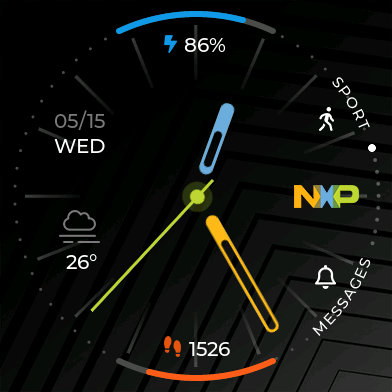GUI Engine
Overview
DejaOS is adapted for embedded devices with screens, therefore requiring graphical interface support. We chose the open-source graphics library LVGL (Light and Versatile Graphics Library) as the core GUI engine.
LVGL is a lightweight GUI framework specifically designed for resource-constrained devices, featuring rich graphical controls, flexible styling systems, and extremely low memory usage. It is widely used in embedded fields such as smart homes, industrial control, and consumer electronics.

Although LVGL itself is developed in C, in DejaOS, we integrate it with the QuickJS engine, allowing developers to directly use JavaScript to build interfaces, greatly reducing the development threshold.
Main Features of LVGL
- Lightweight and Efficient: Can run smoothly on devices with just a few hundred KB of memory, suitable for low-power embedded environments.
- Rich Controls: Built-in UI components such as buttons, labels, charts, sliders, lists, and more for quickly building complex interfaces.
- Customizable Styling: Supports theme systems and style customization, facilitating the creation of unified and beautiful visual experiences.
- Cross-platform Portability: Supports various MCUs and operating systems, adaptable to LCD, OLED, and other display interfaces.
- Active Community Support: Rich documentation, examples, and forums for developers to quickly get started and expand.
Application Advantages in DejaOS
On the DejaOS platform, developers can call encapsulated LVGL interfaces through JavaScript scripts, such as creating buttons, setting text, responding to touch events, etc.:
import dxui from "../dxmodules/dxUi.js";
let button1 = dxui.Button.build("button1", screen_main);
button1.setSize(120, 50);
button1.bgColor(0x000000);
button1.bgOpa(30);
button1.on(dxui.Utils.EVENT.CLICK, () => {
//
});
This approach brings multiple advantages:
- Rapid Development: No compilation required, run immediately after modification
- Lower Threshold: No need to master C language
- Hot Updates: Can remotely deploy UI update packages
Application Scenarios
LVGL is suitable for the following typical scenarios:
- Smart Home Appliances (such as touch panels, smart refrigerators, etc.)
- Industrial Human-Machine Interfaces (HMI)
- Medical Devices (such as diagnostic instrument display interfaces)
- Automotive Center Console / Dashboards
- Smart Wearables (such as watches, fitness devices)
Its powerful extensibility and excellent performance make it the preferred choice for embedded GUI development.